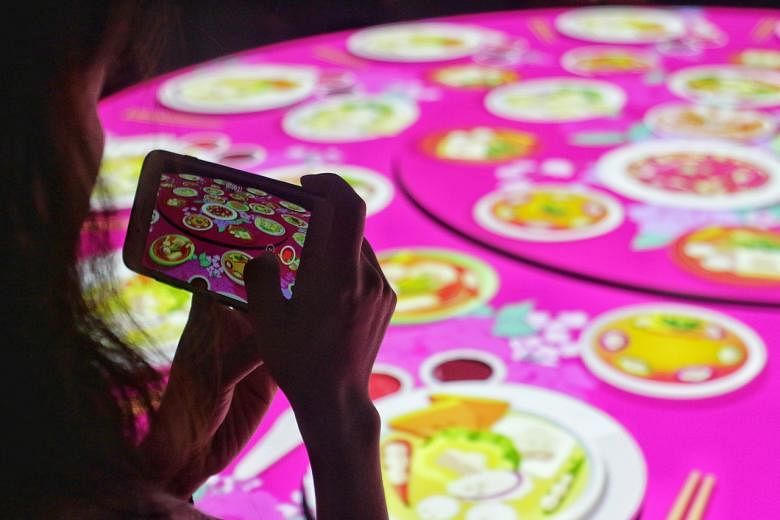SINGAPORE - The nation's go-to breakfast - toast generously spread with butter and kaya, then dunked into a warm brew of coffee, tea or soft-boiled eggs - can be traced back to Hainanese immigrants to Singapore.
It was their spin on Western breakfasts which feature bread, jam and eggs. Kaya, which is made out of coconut milk, eggs, sugar and pandan, replaced the Western-style fruit-based jams.
The ubiquitous breakfast set is one of many examples tracing the evolution of the Chinese Singaporean identity on show at a new exhibition called Singapo(ren): Discovering Chinese Singaporean Culture at the Singapore Chinese Cultural Centre (SCCC) at 1 Straits Boulevard. It was launched on Saturday (Feb 29) and opens on Sunday.
Two years in the making, the permanent exhibition received funding from the Government as well as the Kwan Im Thong Hood Cho Temple.
The cost of the multimedia-heavy gallery was not disclosed. Entry is free.
Other unique aspects of Chinese Singaporean identity on display include special terms and vocabulary which are used only in Singapore or in South-east Asia.
For instance, the word "luoli" is a transliteration or a borrowed word from the English term "lorry". It is known by other names, such as "kache" or "huo che", elsewhere.
Meanwhile, the word "kopitiam" (coffee shop) is derived from the Malay word for coffee and the Hokkien word for shop.
The exhibition features five zones in total.
It starts off by detailing the wave of Chinese immigration in Singapore's early years, noting that British economic interest attracted many Chinese, including Peranakans from parts of South-east Asia such as Java and Malacca, to the island's shores.
Visitors to the exhibition are encouraged to pick up radio frequency identification wristbands at the start of their journey.

This is to enable them to participate in polls seeking their response to questions and topics, such as their favourite Singaporean food and their understanding of local festivals, as they walk through the space.
At the end of the exhibition, visitors may then use their wristbands to generate customised "report" cards, providing insights on their visit and recommendations on other places to explore around Singapore, including heritage landmarks, in relation to their likes and dislikes.
Other highlights at the exhibition include a projection mapping animation of local delights such as laksa and chilli crab in a dining room setting, as well as a section constructed out of old windows and doors from vacated estates in Redhill Close and Bedok North.
Another standout section can be found in Zone 5.

Called Making Our Mark, it features a conveyor belt installation showcasing products by Chinese Singaporean businesses such as Bee Cheng Hiang's bak kwa (barbecued pork), Leung Kai Fook's Axe Brand Universal Oil, and locally produced Chinese television dramas, such as 2008's The Little Nyonya, that have been exported to the world.
Mr Low Sze Wee, chief executive of the SCCC, said of the exhibition: "Our vibrant Chinese Singaporean culture has evolved over the years to one that we can proudly call our own.
"By presenting aspects of our daily life in fresh ways, we hope that the exhibition will be a way for young Singaporeans to uncover our distinctive Chinese Singaporean culture, and inspire them to find out more about their cultural identity."


